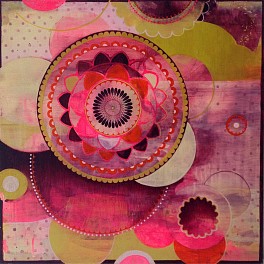BIOGRAPHY

Selected Press:
Martinez, Alanna, ARTINFO STAFF FAVORITE ART OF 2013, DEC.2013
Morse, Abby, Beautiful Decay Magazine, November 2012
Nonemaker, Katherine, Open Lab Magazine Interview, November 2012
Panicelli, Ida, “Cowdust”, ARTFORUM, January 2011
MeCugni, Anna, “Cowdust”, Art in America, January 2011
Naves, Mario, “Julie Evans: Lesson from a Guinea Hen” NY Press, Art Beat May 2009
Kilson, Lyra, “Julie Evans: Lesson from a Guinea Hen at Julie Saul Gallery, New York”, Art on Paper, May/June 2009
Art Editor, “Julie Evans”, The New Yorker, May 2007
Baker, R.C., “Best in Show”, The Village Voice, May 2007
Cash, Stephanie, “Julie Evans @ Julie Saul”, Art in America, Nov. 2007
Naves, Mario, “Magnificence in Miniature”, New York Observer, April 2007
Edward Winkleman blog
Naves, Mario, “Julie Evans’ Infinite Vistas Inspired by Indian Miniature Art”, The New York Observer, October 4, 2004
Artist Statement:
My travels through India over the years have influenced my work in many ways, shaping my ideas as well as many of my formal approaches to making paintings. Struck by the very fluid convergence of visuality, spirituality, and daily ritual that saturates Indian daily life, I appreciated the imperative role of the visual as the primary expression of culture, both contemporary and historical.
Of particular interest to me is the act of ornamentation, seen there in abundance. The profusion of floral garlands, bright colors, and displays of ritualized festooning adorning every other building, tree, rock, temple - are manifestations of devotion (rather than mere decoration), making faith palpably visible.
No less visible than these expressions of devotion, are the explosive scenes of popular culture that exist alongside them, as Brahma meets Bollywood and roadside shrines meet MacDonalds.
These simultaneous extremes of sacred and pop are among the many conspicuous, opposing energies - along with chaos and calm, fast-paced movement and stillness, bombastic sound and silence, etc.. So amidst the crowded cacophony of whirling noise, color, and motion of a typical Indian city street, an impromtu shrine creates a momentary pause - a gap in the surrounding sound and energy - a visual, physical, psychological and emotional slowdown.
I am interested in trying to paint these oppositions and arousing the kind of heightened sense of perception I experience when they collide. So the careful, intricate mandala forms and other ornamental, devotional aspects in my work (including devotion expressed through processes that involve the expenditure of time) set up a foil for the bright, popish elements, - just as their slower pace and sound do for the faster, louder moments in the paintings. Additionally, surface layers of the paintings, both opaque and transparent, open up in places to reveal a lower other, or underbelly of activity.
Of equal interest to me are the amazing, devotional miniature paintings of the Punjab Hills. These Pahari paintings, (mostly from the late 17th century), are small in scale, very detailed, and demand (and reward) close attention. They carry a very powerful intimacy that interests me, which has influenced the scale of my own work. I have also been using many of the materials, tools, and palettes of these traditional paintings, as well as some of their formal conventions. This has set up a framework for me within which to explore a multitude of sensibilities through purely visual means.
